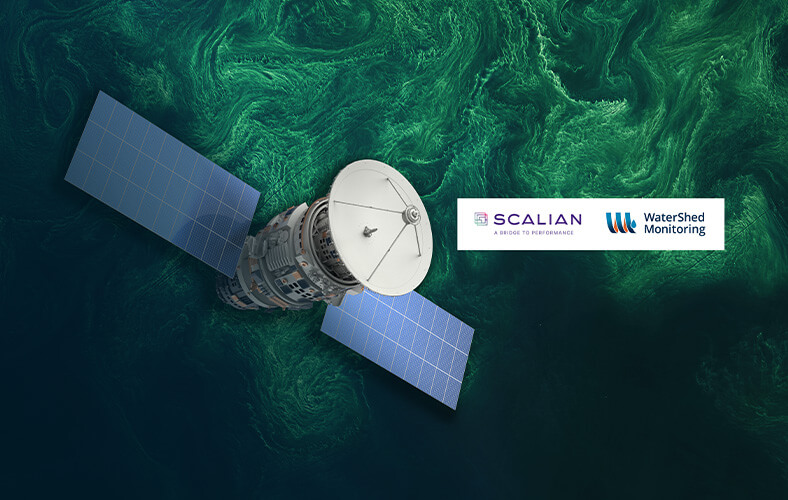When Water Science and Data Science Team Up Against Harmful Algae
The Context:
Climate change and increasing human activity near water points cause cyanobacterial efflorescence to rapidly multiply, leading to potentially harmful water contamination.
The Challenge:
Because cyanotoxins have been associated with various health problems in humans and animals, these events can have serious impacts on public health and on the economy. It is therefore in the interest of all water managers to prevent possible health risks associated with drinking water, bathing, fishing, and agriculture.
The Solution:
To tackle this issue, a revolutionary idea emerged: What if we could use new technologies to predict cyanobacteria blooms before they happen?
Advances in artificial intelligence and big data analysis enable us to imagine all kinds of new ways to exploit remote sensing data contained in satellite images, provided that we can process them.
This is when WaterShed Monitoring approached the SCALIAN group to create an innovative partnership that combines the expertise of the WaterShed Monitoring’s team (limnology, remote sensing, and climatology) with that of SCALIAN’s data scientists to create a tool capable of forecasting, through the analysis of satellite images, conditions favourable to the proliferation of cyanobacteria.
The goal was to provide beach operators, public health officials and lake managers (whose water is used for drinking water production, fishing, livestock watering and irrigation) with an accessible predictive service.
The project was born. Submitted to the National Centre for Space Studies in France (CNES) and the European Space Agency (ESA), it was selected and supported, due in part to the expertise of the WaterShed Monitoring team and their access to important environmental datasets. Stored and structured in Enki, these datasets made available by partner organizations are essential to the success of such a data modelling project.
“Through [Nerthus], we will innovate to create, through data collected by space technologies, new digital uses to measure, analyze and predict our water consumption and changes in its intrinsic qualities. Man […] will then have the ability and the responsibility to act for this precious common resource. “– Yvan Chabanne, President of the SCALIAN Group.
In practical terms, the developed solution relies on an artificial intelligence system to extract information from various terrestrial and spatial data sources, including multispectral satellite images that have undergone digital post-processing. Deep learning then provides a first indicator of the possible emergence of cyanobacterial efflorescence in a targeted geographical area.
It leverages the ergonomic interface and data aggregation capabilities of the Enki software to run predictive artificial intelligence models and communicate predictions to users.
A feasibility study was carried out in 2021 with the goal of identifying the critical points that could hinder the development, industrialization, and marketing of the developed solution. It has delivered very promising results in terms of market interest, economic viability, and technological feasibility, in addition to identifying opportunities for future development.
“By predicting blooms before they occur, our solution gives stakeholders time to implement their protection plans and mitigation measures before it’s too late. This is the only way to avoid human and animal exposure to cyanobacterial toxins and to prevent their impacts.” Sonja BEHMEL, Ph. D., President and Director of WaterShed Monitoring.
The Results:
Now equipped with a functional tool available for beta testers, the consortium formed by WaterShed Monitoring and Scalian, with the support of ESA and CNES, are entering the active industrialization phase of the developed solution in 2022.
The beta tests are launched with the Regional District of North Okanagan (Canada), Agiro (Canada), the PETR du Pays de Langres (France) and the Niedersächsische Landesbetrieb für Wasserwirtschaft, Küsten-und Naturschutz (Lower Saxony Ministry for the Environment, Germany).
Simultaneously, the partners continue to refine predictive models, notably by working on the integration of other types of remote sensing data that will enable, among other things, watershed, lagoon and coastal monitoring.
